Reaction to our original post The Preservation Movement in Early Days (April 5) was very positive, so we decided to write a follow-up.
On the one hand, we are struck by the haphazard nature of what got preserved. Some very important car types were all scrapped, while numerous examples of less important ones were saved.
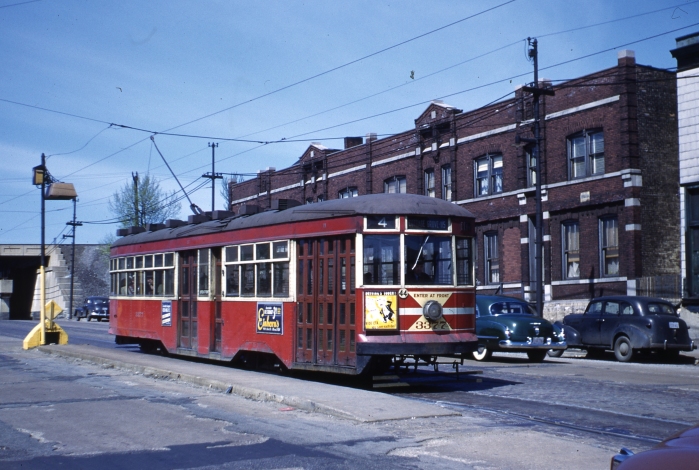
Sadly, none of Chicago’s “Sedans” (aka Peter Witts) were saved, even though they were some of CSL’s finest cars ever. Here we see 3377 on May 6, 1951, at 95th and Cottage Grove. (Author’s collection)
The 1929 Chicago Surface Lines “Sedans,” also known as Peter Witts, were all scrapped by 1953, and therefore none were saved for posterity. Today, you can ride Milan Witts in several cities, including San Francisco, but none from Chicago- or Cleveland, for that matter, where Peter Witt got his start.
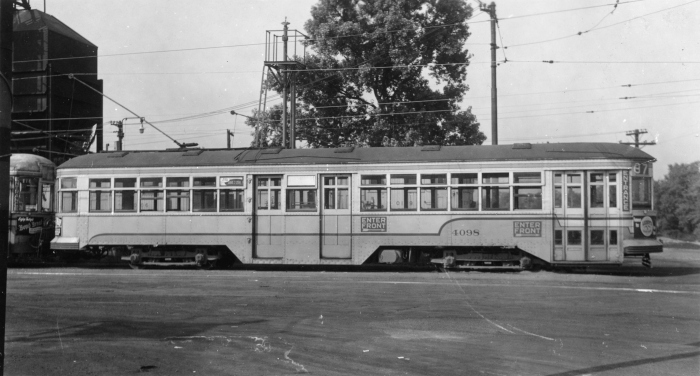
Again, what a shame that none of the Cleveland “Peter Witts” were saved. Here, we see CTS 4098 at the Euclid Car House on June 12, 1950. This car was scrapped on November 10, 1953. Car 4144 was sold to Norman Muller in 1954, and moved to his residence in South Lorain, where it was painted green and lettered “Arlington Traction Co.” Muller had a whistle and pipe organ installed. Unfortunately, when the car came up for sale again, Gerald Brookins had just purchased an abundance of CA&E cars and took a pass. Thus the last Cleveland Witt was scrapped in 1962. (Author’s collection)
One of the Cleveland Witts survived until 1962, and it is unfortunate that Gerald E. Brookins did not buy the car. He had just purchased several ex-Chicago, Aurora & Elgin cars, including the only four of the 451-460 series that were saved. Those cars had only seen 12 years of service in Chicago, and still had plenty of miles left in them.
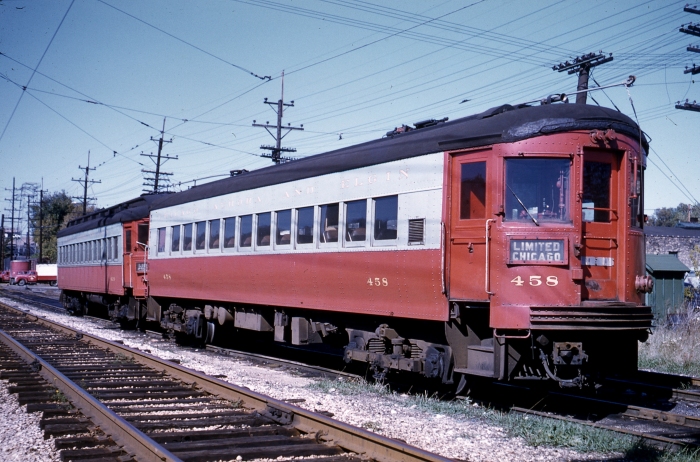
Chicago, Aurora & Elgin car 458 in a photograph taken October 8, 1955 on an inspection trip in Elgin. This car was part of a 10-car order built by St. Louis Car Co. in 1945, sometimes called the last order for “standard” interurban cars in the US. Originally purchased by Gerald E. Brookins in 1962, this car is now preserved at the Fox River Trolley Museum in South Elgin. (Author’s collection)
If things had been different, all 10 cars might have ended up in Cleveland airport service. They were considered for purchase during a time when the airport extension would have been paid for with local money, and this would have been a low-cost way of getting things started. But when local politics intervened, the budget for the extension was diverted somewhere else, and the extension finally opened with new rolling stock in 1968. (We will include the source for this story at the end of this post.)
Early scenes from trolley museums show the cars all stored outdoors, where they were likely to deteriorate, strewn about surrounded by muddy fields. Thankfully, things are much improved nowadays.
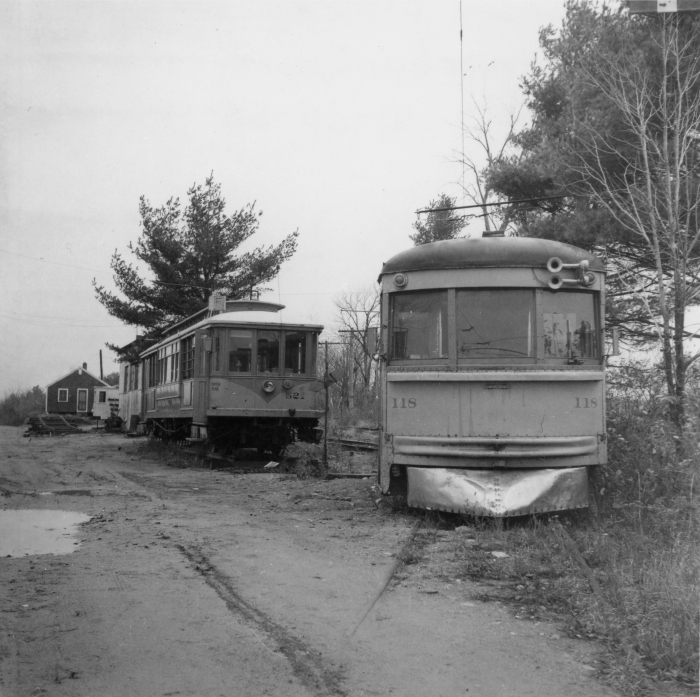
The Seashore Electric Railway Museum in Maine on October 26, 1955. At left we see ex-Los Angeles Railway narrow gauge car 521, with ex-CRANDIC (and C&LE) high-speed car 118 on the right. (Author’s collection)
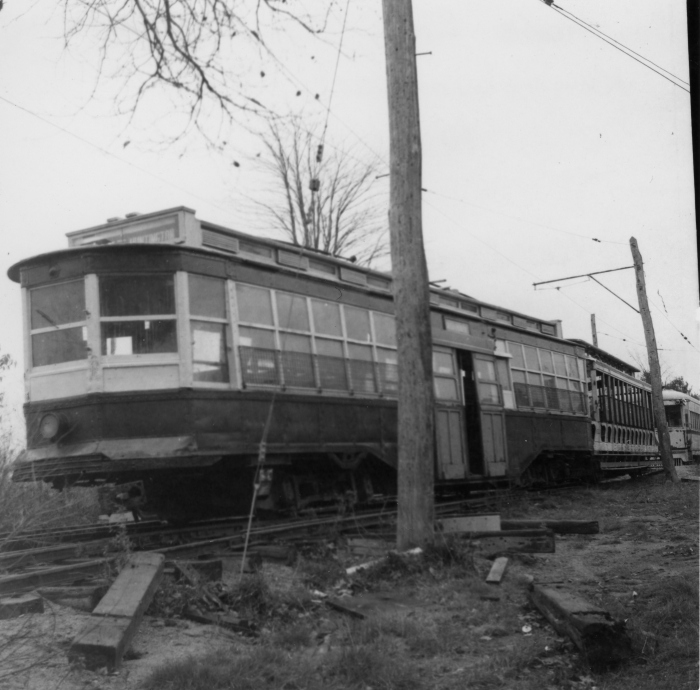
The Seashore Electric Railway Museum in Maine on October 26, 1955. Ex-Boston Elevated “drop center” car 6270 is at the front, while LVT 1030 brings up the rear. (Author’s collection)
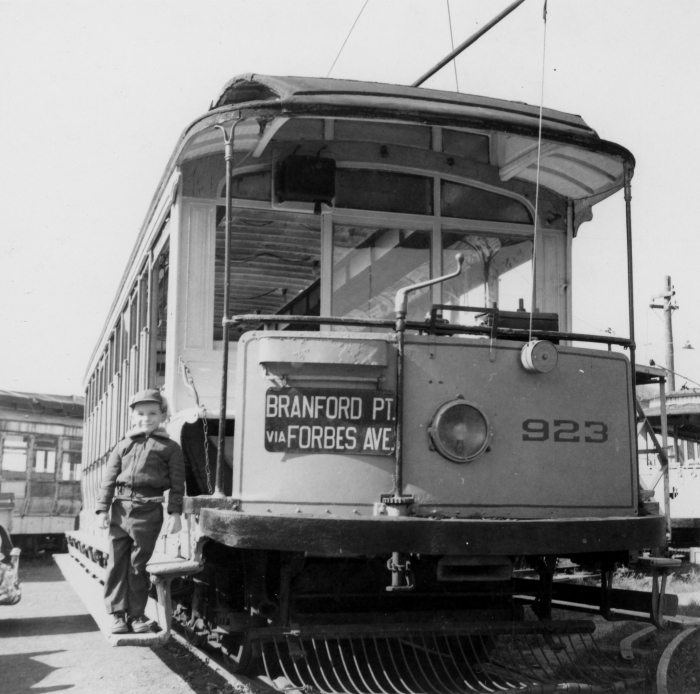
A young railfan at the Branford Electric Railway Association Museum in East Haven, Connecticut on October 23, 1955. Pictured is Connecticut Co. open-bench car 923. (Author’s collection)
Sometimes, cars were saved from the scrapper on their original property, only to fall victim to some other disaster in museums or elsewhere. On the other hand, there are a few examples where a car has been, or will eventually be returned to run in the same city where it did decades earlier. This is particularly gratifying.
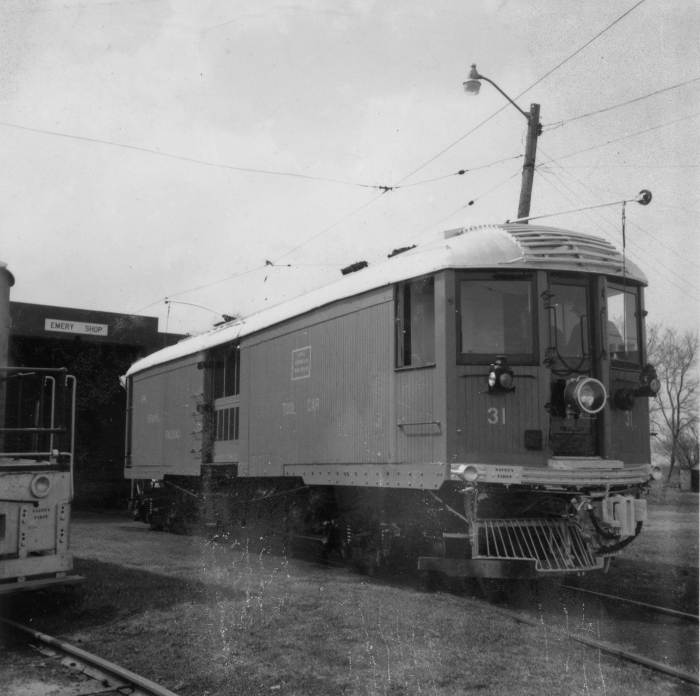
CNS&M 216 survived the abandonment of that interurban in 1963 to become Iowa Terminal Railroad tool car 31. Here it is shown on April 27, 1964 at Emery Shops, just after being repainted. Unfortunately, this car was destroyed in a fire on November 24, 1967. (Author’s collection)
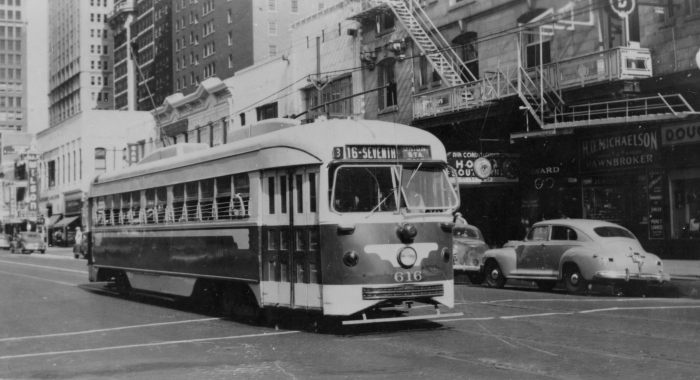
Double-end PCC cars like this ran in Dallas from 1945 to 1956, and then in Boston from 1959 to 1981. Sister car 612 (renumbered 3334 in Boston) has been purchased by the McKinney Avenue Transit Authority and may run again on Dallas streets, once restored. Here we see 616 in July, 1946. (Author’s collection)
Some properties, like Lehigh Valley Transit, were in such a hurry to get out of the interurban and streetcar field that they destroyed both tracks and cars in a very short period of time. Yet today, when we see pictures of LVT trains speeding between Allentown and Philadelphia, we are reminded of how we once had high-speed intercity rail in many places in this country.
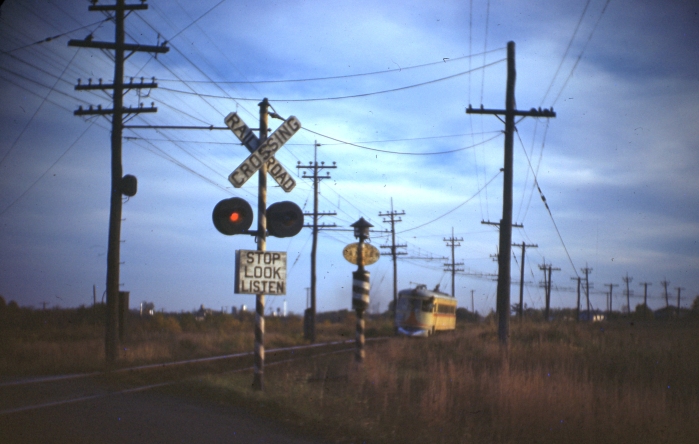
An LVT Liberty Bell Limited speeds along the Pennsylvania countryside in this undated photo. We once had high-speed rail between many cities, and all we had to do was keep it and improve it. Since we largely didn’t, now we need to reinvent the wheel. (Author’s collection)
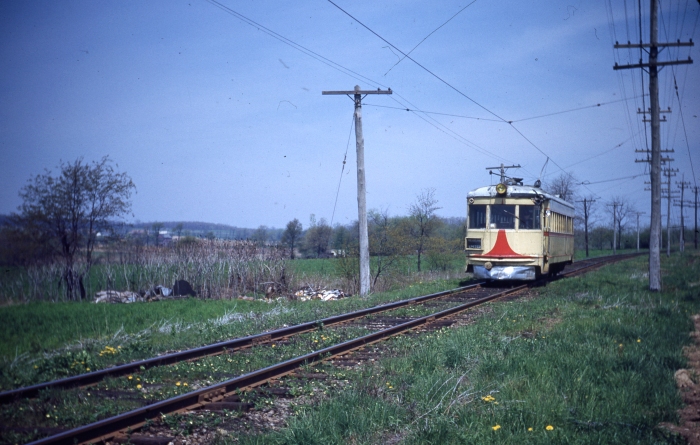
LVT 1008 southbound between Zion Hill and Shelly Road on May 1, 1951, just a few months before abandonment. None of the ex-C&LE high-speeds that LVT had were saved. (Author’s collection)
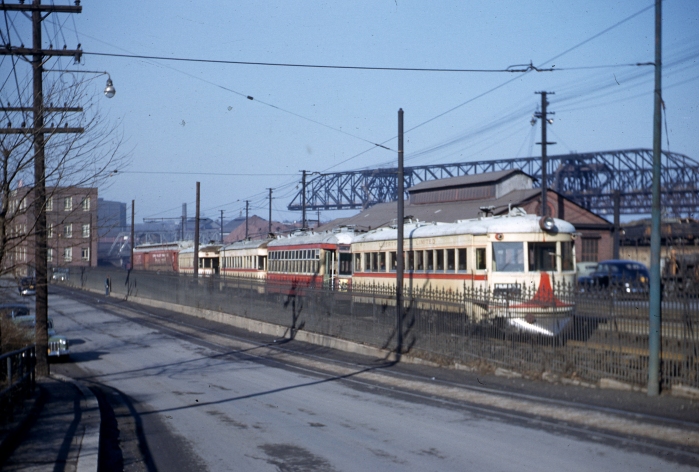
LVT cars 1006, 910, 1021, 1002 and C17 on the scrap track at Bethlehem Steel on January 23, 1952. In some cases, LVT scrapped city streetcars the day after they were taken out of service. (Author’s collection)
Systems like the Liberty Bell Limited route, or the Chicago, North Shore and Milwaukee, were developed and improved piecemeal over a period of decades. But today, to bring back high speed rail, systems such as these would need to be rebuilt from scratch, at a cost of untold billions. It would have made more sense to keep what we once had- which we could have done, had it been considered an asset to society.
Unfortunately, in too many instances, towns and cities simply said, “Good riddance.” But I question whether the improved future that was promised once streetcars and interurbans were eliminated ever came to pass. Instead, it seems more likely that their absence helped hasten urban decay.
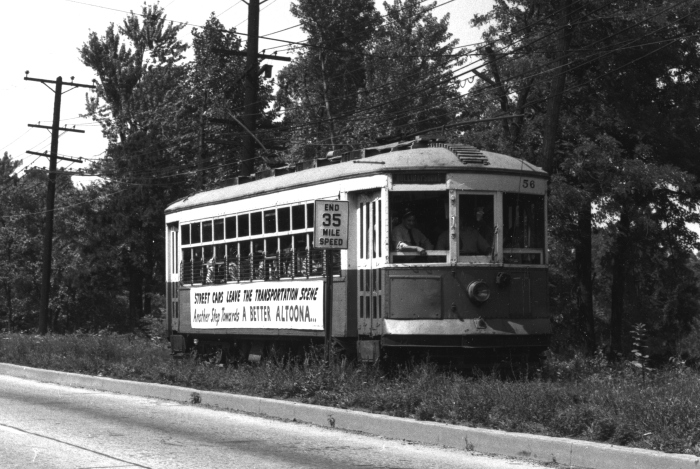
Altoona and Logan Valley 56 going to Holidaysburg Pennsylvania on the last day, August 7, 1954. I question whether this resulted in a better Altoona or anywhere else. Now the pendulum has swung back in the direction of streetcars. (Author’s collection)
Now things have come full circle. In many places across the country, the streetcar’s return is heralded and welcomed, as a way of improving urban life. And high-speed intercity rail, which we once called “interurbans,” seems poised for a gradual comeback of its own, as a matter of government policy.
We present these historic photos for your enjoyment and ask that you draw your own conclusions.
-David Sadowski
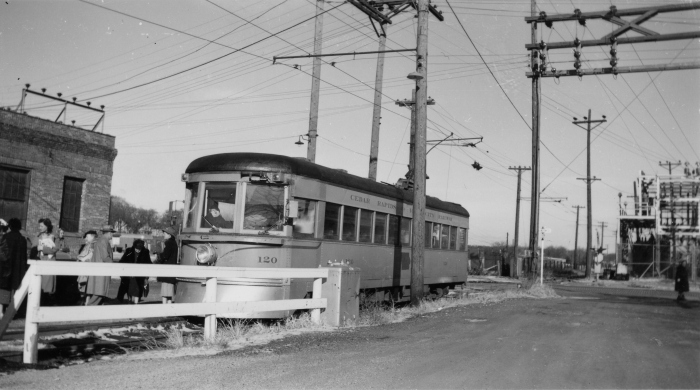
CRANDIC 120 at Iowa City on November 27, 1952. This car is preserved today at IRM as Indiana Railroad 65. (Author’s collection)
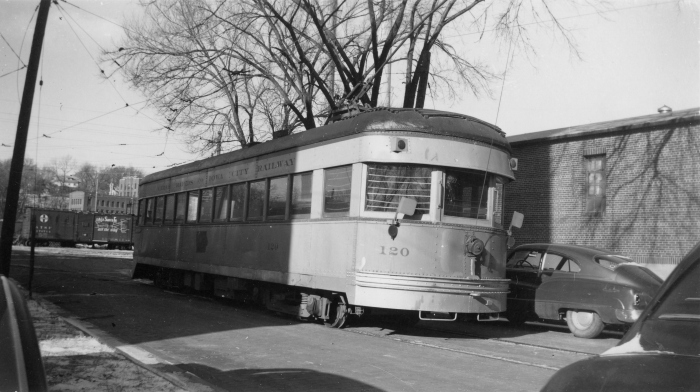
CRANDIC 120 at Iowa City on November 27, 1952. This car is preserved today at IRM as Indiana Railroad 65. (Author’s collection)
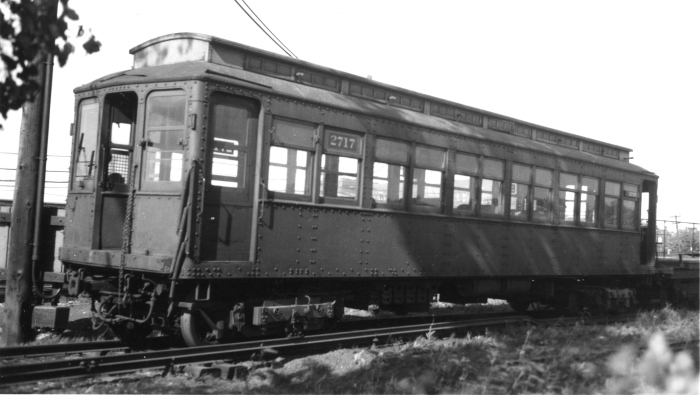
Chicago Rapid Transit all-steel “L” car 2717 was originally built as an experiment in 1904 by ACF to replace a wood car that had burned up. It ran on the Metrolpolitan West Side Elevated, but unfortunately was not saved. (Author’s collection)
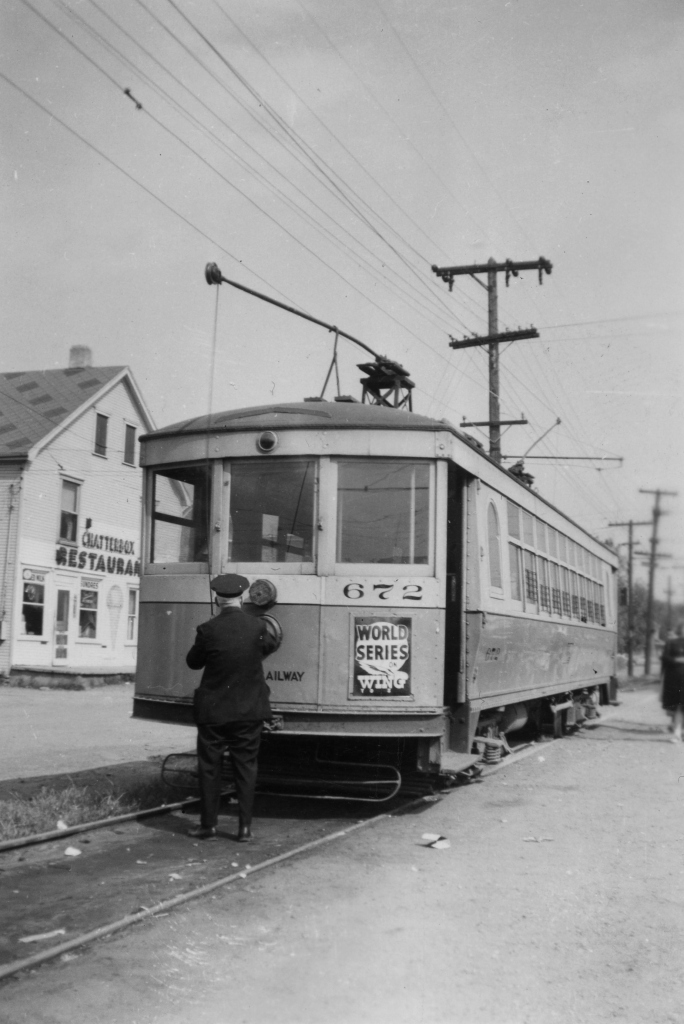
The last streetcar run in Dayton, Ohio on September 28, 1947. However, Dayton still runs trolleybuses, and they are celebrating 80 years of service this April 23rd. (Author’s collection)
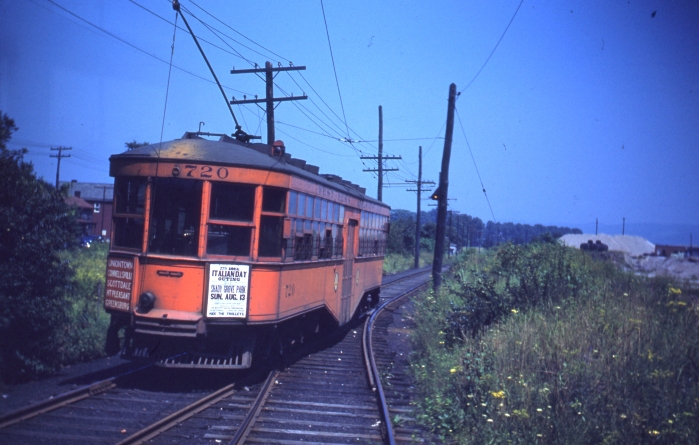
West Penn Railways 720 at Scottsdale on August 22, 1950. Supposedly, West Penn quit when television broadcasting came to the area in 1952. The line is said to have had a lot of evening riding. (Author’s collection)
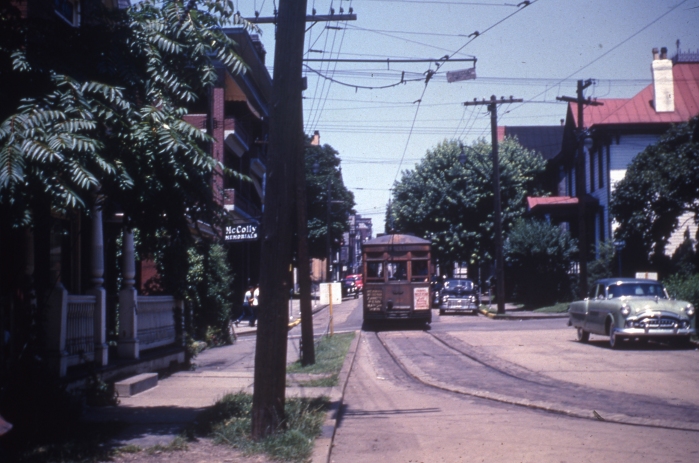
West Penn railways 286 in Greensburg, Pennsylvania on July 12, 1952. The trolley represents a way of American life that has vanished much as the nearby Packard automobile has. But it is making a comeback. (Author’s collection)

CRANDIC 116, ex-C&LE, in Iowa City on October 26, 1952. This car is preserved at the Branford Trolley Museum. (Author’s collection)
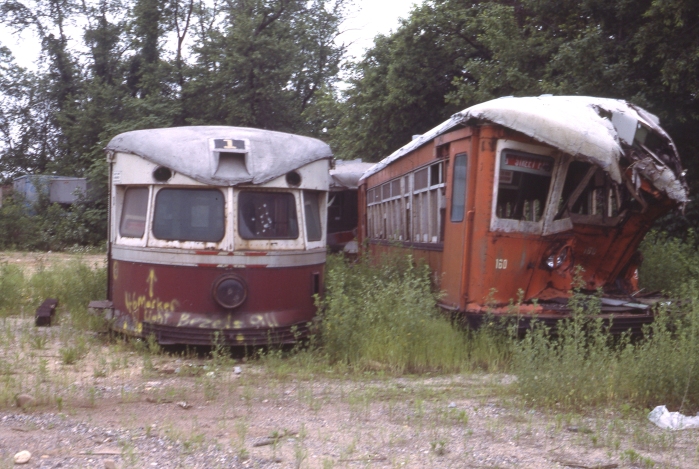
Even in the modern era, not all historic cars can be saved. Here is SEPTA “Bullet” car 201 and some Strafford cars at a scrap dealer in New Jersy in June, 1987. (Author’s collection)
From the Cleveland Plain Dealer, November 16, 1968:
Writer’s Dream of ’59 Realized
By Wilson Hirschfield
The rapid transit extension to Cleveland Hopkins International Airport, opened amid fanfare yesterday, was a dream come true for this former transportation reporter.
No advocate of rail rapid transit for Cleveland, then or now, this writer in December 1959, urged County Engineer Albert S. Porter to advocate building the airport line because it appeared to afford a unique opportunity to improve public transportation and at the same time enhance Cleveland Hopkins as a major airport.
Porter, himself no booster of rail rapid, saw merit in the proposition and was the first to publicly espouse the project. Within a few weeks, this reporter was able to convince Gaspare A. Corso, a
Cleveland Transit Board member, to get behind the proposal. He took it up like a crusade.
At the beginning, the project was supported only by Porter, Corso, and The Plain Dealer. Once it started to get off the ground, there was strong behind-the-scenes opposition, particularly from the parking, taxi and limousine interests at Cleveland Hopkins. There was even some activity against the extension by Playhouse Square realty and business interests that did not want to see Public Square win another transportation benefit.
Foes of the airport extension managed to throw many a roadblock in its path. Corso worked out a plan whereby CTS could have paid for most of the project out of the farebox, with the help of two bond issues that the voters approved in 1960 for $5.8 million.
Part of the program was to defer bus purchases, and to renovate old buses as has been done by successful transit systems in other cities. Another step to be taken was to retain for several years service, the comfortable, fume-free trackless trolleys that still were operating on a number of lines.
This writer and Corso worked together in planning these moves, along with Harry Christiansen, a transit expert and executive assistant to Porter.
Another proposal from this reporter was for the rapid to cross the Berea Freeway at grade at the entrance to Cleveland Heights, with use of flasher lights and traffic signals. Two lines of the Shaker Heights rapid transit had been crossing busy Shaker Square at grade for years with no safety problems.
The idea was put both to Porter and to William B. Henry, then division engineer here for the State Highway Department, and both of them said it would be feasible- and safe. All of us agreed that when money would become available, the extension could be tunneled under the freeway and into the airport terminal.
It was Christiansen who came up with the news that some former high-speed interurban cars were available in Wheaton, Ill., that could be renovated for the extension. Corso went there and came back with some cost figures to purchase the cars- at about scrap price- and renovate them. Of course, they wouldn’t have been glamorous like the shiny new Airporter cars, but they would have done for a while.
But CTS management insisted that the 70-foot long interurban cars could not negotiate the curves in Union Terminal and therefore were out of the question. Incidentally, the shiny $175,000 Airporters are 70 feet long.
Corso, board member Allen J. Lowe and former member Charles P. Lucas were a majority bloc on the transit board for about two years. Then the majority fell apart and Corso was left by himself. The project was shelved, to be revived when the Federal Mass Transportation Act became law in 1964.
Had it not been for all the opposition, the airport extension probably could have been opened five years ago. But in Cleveland, public improvements don’t come easily.
(PS- Here is a timeline from the same issue showing when certain decisions were made.)
Dec. 21, 1959- County Engineer Albert S. Porter proposes rapid transit extension to airport.
Jan. 7, 1960- Transit Board member Gaspare A. Corso endorses idea and becomes its champion at CTS.
April 21, 1960- Board votes 5-0 to build airport rapid. Management still cool to idea.
May 6, 1960- Board votes 4-1 against Corso to spend $1 million for buses, using money intended for rapid extension. Order trimmed 25% a month later.
Nov. 8, 1960- Voters of city and county approve by wide majorities $5.8 million in bonds to build extension.
Sept. 6, 1962- Board members Allen J. Lowe and Charles A. Lucas desert Corso’s pro-extension majority to endorse management’s request to purchase 60 new buses with funds being held for rapid extension. This meant death of locally-financed airport rapid.
(So, chances are that CA&E cars were being considered sometime between Nov. 1960 and Sept. 1962. I believe the last car to leave Wheaton was #320 in Spring 1962, and the unsold cars were scrapped starting in January 1963. The reference in the above article to 70 foot cars, of course, is in error, as the CA&E steels had to conform to Chicago “L” clearances, meaning a 48 ft. length.)